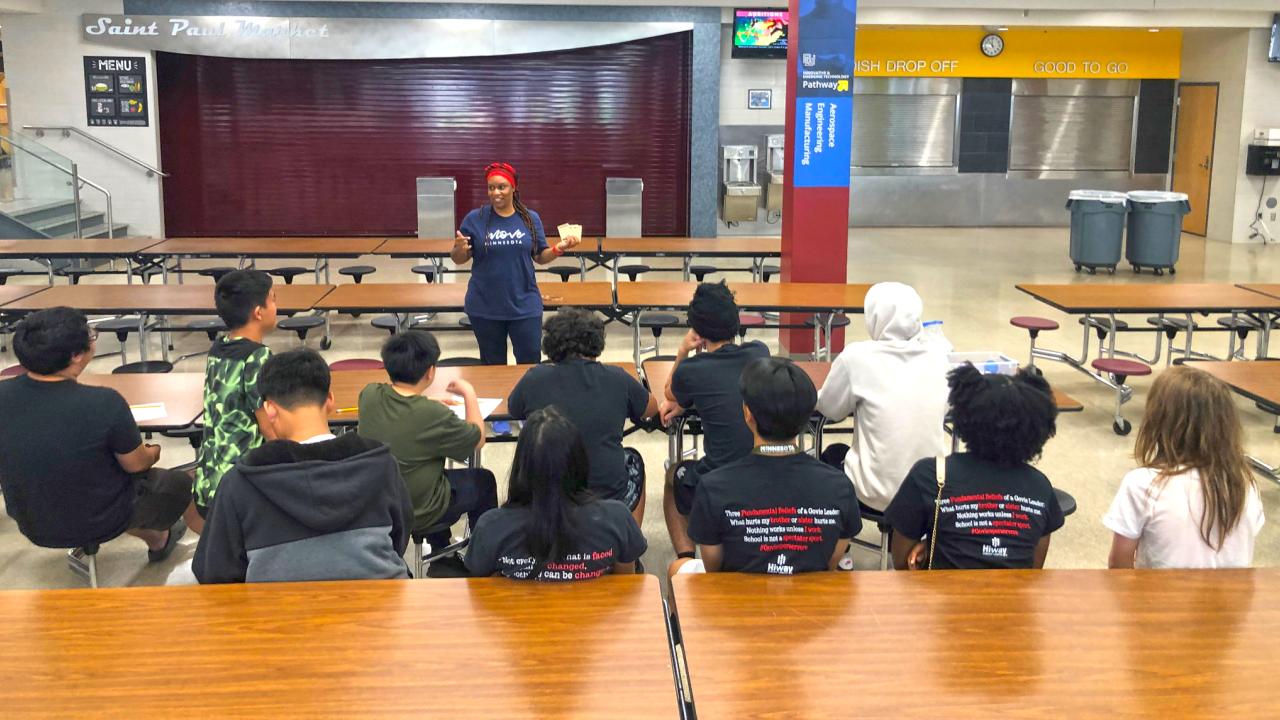Five Successful Approaches to Empower Students to Take Public Transit
As transit champions, we know how important it is to break through the noise of everyday life to connect with and inspire other people in our communities. As adults, we know that can be especially challenging with young folks, who are newly navigating social norms, peer pressure, and changes in their own bodies.
When we kicked off our Changing the School Commute initiative in 2022, we knew we had to change things up from our traditional outreach to get students actively engaged in learning about public transit.
Instead of making assumptions, we went to young people directly. We convened high-school discussion groups. We listened to what teens shared during after-school sessions and informal conversations. We let that youth insight and creativity inspire and guide us in trying new things—and embraced the many pivots and switchbacks that came with unexpected circumstances and feedback from the students.
Over the past two and a half years, we’ve connected with more than 1,000 students in a variety of ways, from one-to-one conversations, to single classroom sessions to extended engagements over multiple weeks. We’ve learned so much from the students about how they want to receive information and put it into action.
Here are five key approaches we found made a positive impact with students…

1. Trivia
“Gamification” is a trend across sectors, but it’s especially gaining ground in educational settings as teachers and advocates look for ways to make the learning experience more interactive for students. We learned about Kahoot! from a teen who rolled their eyes at our traditional presentation style, and assured us it would NOT resonate with young people. So, throughout our engagements, we tapped into this online resource to create trivia challenges on everything from how using the bus works to how transit impacts our personal budgets. When we played Kahoot! the students became so engaged. They were applying the knowledge they learned from our lessons immediately. The competitive nature of the game got students animated and excited to prove who knew the most from the lesson.

2. Art
When we hold onto unanswered questions or don’t have space to process a difficult experience, we unconsciously create barriers in our own bodies. Art is a proven avenue to tap into unspoken thoughts and make sense of emotions in somatic ways. In the wake of the pandemic and uprising, we knew young people across the Twin Cities were experiencing public spaces differently given the public health threat and civil unrest. We invited artist seangarrison to join us at Minnehaha Academy, where a group of ninth graders used their hands to paint their experiences of the streetscape on a huge canvas. Some created smooth, flowing lines while others’ expressions were jagged and disjointed. Some were wary of getting their hands dirty and others dove right in. But all the students became focused, using the tactile experience to enter their own internal worlds and feel into the experience of being in public space in transformative ways. As one student told another: “The two parallel lines I painted represent traveling with a friend. That makes the ride fun.”

3. Money
Whether it’s their weekly allowance or a birthday present from grandma, most young people are careful about how they spend the limited amount of money they can glean from adults before they earn income for themselves. Others are working hard to save up their wages from part-time jobs. So we tapped into that interest when we visited the Senior Economics Class at Avalon School. We did comparisons of how much car ownership costs compared to a year of transit travel. Students applied what they had previously learned about budgeting to get a firm grasp on how choosing a sustainable transportation option would actually lead to greater financial health. Students also used what they learned about transportation’s impact on personal budgets to better examine how our government allocates spending for public transit.

4. Community
Especially for youth, taking public transit isn’t just about the starting point and destination, the logistics of buying a ticket. and the norms around signaling your stop. It’s about everything in between. In our engagements, we helped students identify strategies for “safe and enjoyable rides” so they could look forward to the enjoyable aspects of transit and know what to do if they ever feel uncomfortable. We also highlighted the support outside the bus or train, taking transit field trips to the public library so students could meet staff, learn about resources (like charging their phone), and experience first-hand a reliable safe space in community. Many of the students were surprised to find out that the library is free, has much more than books, and they can check out items with their student ID! One student said they appreciated the lesson because it affirmed for them that they are making the right choices for staying safe on transit, and they felt more confident because of that.

5. Autonomy
Perhaps more than anything else, students are eager for experiences that support their independence and honor their ability to lead themselves. In our multi-week engagement at Great River School, we were intentional about extending trust to students by giving them their fare cards for field trips and telling them to bring them to class on the appropriate days. Almost universally, they stepped into that responsibility. We also stepped back and let them take the reins and problem-solve for themselves. When we planned a transit field trip to Como Zoo, they wanted to hit up Rosedale Mall instead. Instead of shutting them down, we let them use Google maps to plan a route and negotiate an early dismissal with a teacher so they’d have enough time to take the trip. So we weren’t at all surprised when, at the end of that engagement, 80 percent of the students said they felt comfortable navigating public transit on their own in the future, and 100 percent said they recommend this class for other students their age.
We are so grateful for all the schools and students we have gotten to work with over the past two years, and we are excited to see how students continue their journey on public transit! Learn more about the program here!

